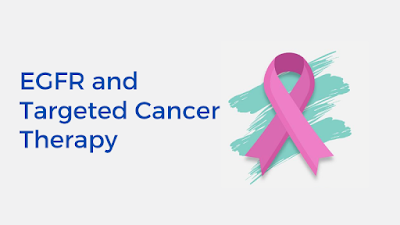Well-known as HER1, EGFR, or epidermal growth factor receptor is commonly found on the surfaces of both normal and cancer cells. It has a vital role in contributing to the division and growth of cells in the body. As the molecules bind to it, chemical messages from outside of the cell are received by the EGFR. There are 7 ligands or molecules, and when any one of them activates the EGFR, a signal is sent to the protein for the process of cell division. It must be noted that cancer drugs highly target EGFR during therapy.
EGFR has changed the entire aspect of non-small cell lung cancer treatment. How? In simple words, it can be stated that certain mutations within the EGFR has the capability of making the tumor extremely sensitive to kinase inhibitors. Research has revealed that approximately one-third of patients who have been diagnosed with NSCLC have the EGFR mutation.
Targeted Therapy for Cancer and EGFR
It is a known fact that cancer cells divide rapidly and spreads within the body. Usually, the most prevalent forms of cancer therapies are chemotherapy and radiation that can destroy these cells. However, the only problem is that, like cancer cells, some of the normal cells also tend to divide rapidly. That is why these approaches to treatments have several side effects.
That is where the targeted drug therapies for cancer can be discussed broadly. Usually, the drugs aim to identify the cancer cells and differentiate them from the normal ones by targeting the abnormalities in the former. Although this therapy can have side effects, they are much lesser compared to that of the others.
As mentioned previously, EGFR receptors are also present in normal cells. However, a certain mutation to the EGFR gene can result in innumerable receptors on the surface of particular cells, which leads to rapid growth, thus causing cancer. Now, targeted drugs block the EGFR receptors in places where they appear in most significant numbers or clusters. While doing this, a certain amount of normal skin cells can be affected as well because they also consist of a huge number of EGFR receptors. Therefore, skin rashes are some of the most common side effects during the course of this therapy.
There are two ways by which targeted drug therapies work in order to block the EGFR. The ligand can be prevented from binding with the EGFR from outside the cell, while on the inside; the signal from EGFR can be prevented from reaching the proteins that cause abnormal growth.
Important drugs that are used to conduct targeted therapy
Cetuximab and Panitumumab are such drugs that help to block the part of EGFR outside the cell, which in turn won’t let the EGFR signal other proteins inside the cells. Similarly, targeted drugs like Erlotinib, Gefitinib, and Afatinib are given to block the EGFR inside the cell that can ultimately restrict tumor growth.
Conclusion
Researchers have also claimed that the next-generation EGFR targeted therapies have very few side effects. Thus, they can be tolerated easily by the patients. Apart from this, this mutation is also found in other types of cancer like breast cancer, medullary thyroid cancer, pancreatic cancer, squamous cell carcinoma, and so on.

I was diagnosed as HEPATITIS B carrier in 2013 with fibrosis of the
ReplyDeleteliver already present. I started on antiviral medications which
reduced the viral load initially. After a couple of years the virus
became resistant. I started on HEPATITIS B Herbal treatment from
ULTIMATE LIFE CLINIC (www.ultimatelifeclinic.com) in March, 2020. Their
treatment totally reversed the virus. I did another blood test after
the 6 months long treatment and tested negative to the virus. Amazing
treatment! This treatment is a breakthrough for all HBV carriers.